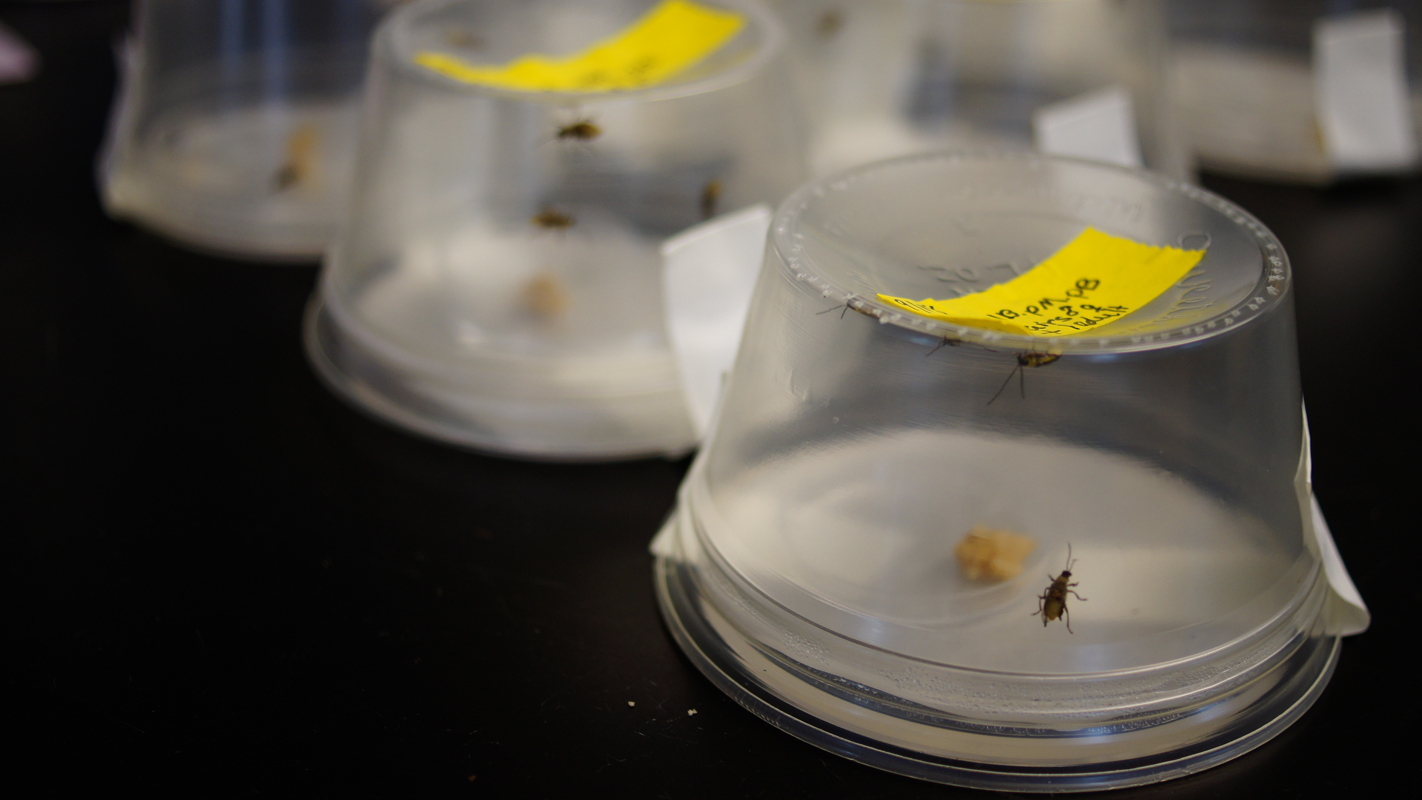The Root(worm) of the Problem: Unexpected Obstacles on the Road to Research

There’s a side of science that many people don’t know about. Namely, the fact that scientists often have to spend an enormous amount of time becoming experts in things outside their field of study in order to do research they think is important. This is where a corn-eating beetle and a guy named Clay Chu come in.
The western corn rootworm beetle (Diabrotica virgifera virgifera) is bad news. As larvae, these insects feed on the roots of corn plants, while the adults can damage corn leaves and silk. Experts estimate that the rootworm costs U.S. farmers an estimated $1 billion per year in lost crops and pest control expenses – but that estimate dates to 1986, so the cost has probably gone up. And that estimate doesn’t include the cost to farmers elsewhere in North America and Europe.
Clay Chu is a Ph.D. entomology student at NC State in the lab of Marcé Lorenzen, and he’s very interested in Diabrotica virgifera. With Lorenzen’s support, and funding from Monsanto, Chu is trying to create a system of genetic markers that can be used to study the rootworm, so that we can develop new tools and strategies for controlling the pest.

Specifically, Chu is introducing genes into rootworm DNA that trigger production of a fluorescent protein. The idea is to create a line of rootworms in which the fluorescent proteins are produced whenever a targeted gene is activated. In other words, researchers could study specific genes by having the rootworms light up when those genes are expressed.
Cool, right?
But before Chu can do all the things he wants to do in the lab, he needs to be able to keep a colony of rootworms alive and healthy for generations. No rootworms, no research.
And for a species that is frustratingly difficult to eradicate in the wild, rootworms are tough to keep alive in the lab – as Chu learned the hard way.
“We’ve had to address a wide range of problems, which has slowed down our work on rootworm genetics,” Chu says. “We’ve had to develop expertise in rootworm lab survival in order to pursue the larger scientific questions we’re really interested in.”
Problem 1: Eating
When Chu first set up his lab to study rootworms, he fed them insect food that he made using a standard recipe. (Yes, these exist.) But there was a problem.
“Every week, 30 percent of my population [of rootworms] died,” Chu says. After a frustrating trial and error period, Chu determined that the diet was to blame.
“It took four months to find a recipe that didn’t kill them,” Chu says. But there was another problem.
Problem 2: Breeding
In order to determine whether and how the genes for fluorescent proteins are being passed on to the next generation of rootworms, Chu’s research team needs to collect and screen their eggs. Easier said than done.

In the wild, adult rootworm beetles lay their eggs in the soil, near the roots of corn plants. But eggs laid in soil are difficult (or impossible) to find and retrieve – they look like tiny brown specks. So Chu needed to simulate egg-laying conditions in the lab without dirt or corn roots.
Chu ultimately settled on a customized (and improvised) set-up. A petri dish is the foundation, including a thin layer of non-nutritional agar to provide some moisture. The bottom of the dish is lined with filter paper and loosely-woven cheesecloth to mimic corn’s fibrous root structure. It looks like a tiny, white shag carpet, but that makes the eggs more visible and easier to collect.
The male and female are kept in the dish by an upside down plastic cup that has holes punched in the top and is taped to the dish.
“This is something I had to come up with on my own, but it works,” Chu says.
Problem 3: Health
As it turns out, farmers aren’t the only organisms interested in killing rootworms.
“There are a lot of bacteria, fungi and mites that can kill rootworms at every life stage,” says Katy Chalmers, a lab tech working with Chu to maintain the lab’s rootworm colony. “And it’s almost impossible to eliminate all of these variables.”
To minimize mortality, the researchers disinfect almost everything the rootworms come into contact with – from the special rootworm diet to the cheesecloth and egg collection cups.
“When good protocols aren’t observed, you can lose an entire generation, meaning none of the eggs reach maturity,” Chu says.
However, while Chu’s team is still experimenting with new techniques to improve the survival rate, they’ve reached the point where 30 percent of the eggs are reaching adulthood.
“That’s very good and, if we can keep it up, we’ll be in good shape,” Chu says.
And if a new problem crops up? Well, Chu has plenty of practice at tackling unforeseen obstacles.
- Categories:


